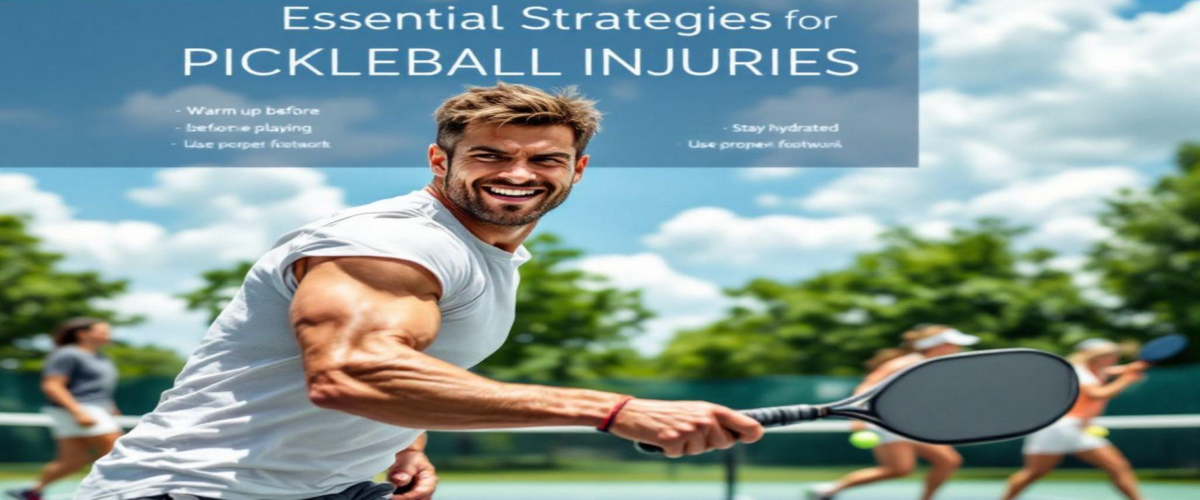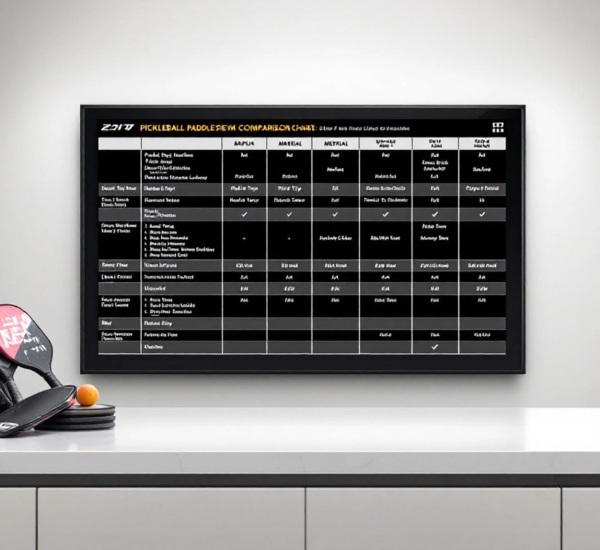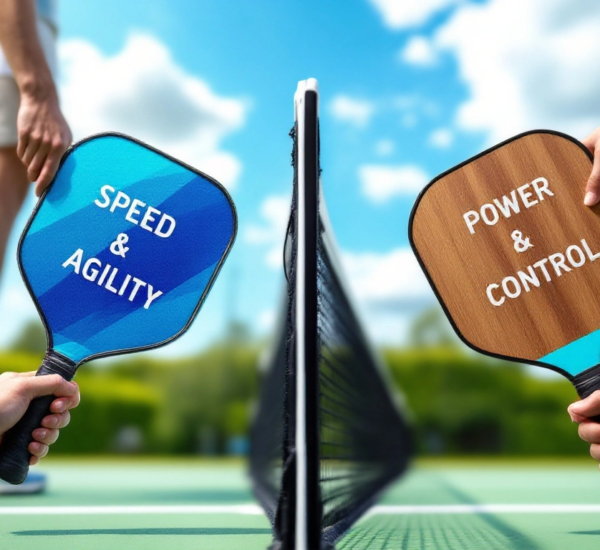Pickleball is one of the fastest-growing sports in the world, beloved for its accessible gameplay and social nature. However, as with any sport, the risk of injury increases as more people hit the court. Preventing pickleball injuries is key to enjoying the game without interruptions. Whether you’re a beginner or a seasoned player, understanding common pickleball injuries, ways to avoid them, and exercises to stay safe will keep you playing at your best. In this ultimate guide, we’ll explore safety tips, injury prevention strategies, and best practices to ensure you stay injury-free and ready for your next match.
Table of Contents
- The Most Common Pickleball Injuries and Their Causes
- Essential Pickleball Safety Tips to Avoid Injuries
- Injury Prevention Exercises for Pickleball Players
- How to Recover Safely and Prevent Future Pickleball Injuries
- Pro Tips for Staying Injury-Free During Pickleball Matches
The Most Common Pickleball Injuries and Their Causes
Overuse Injuries (e.g., Tennis Elbow, Shoulder Strain)
Overuse injuries such as tennis elbow and shoulder strain are common among pickleball players due to repetitive motions, like swinging the paddle or extended play sessions. Symptoms include persistent pain, stiffness, and diminished mobility in the affected areas. Recognizing these early and addressing them with rest or modified activity can prevent further complications. Understanding Overuse Injuries can provide deeper insights into protecting yourself.
Acute Injuries (e.g., Sprains, Twisted Ankles, Falls)
Acute injuries often occur during high-intensity or fast-paced play. Twisted ankles, falls, and sprains can happen when players lose balance or attempt quick directional changes. Knowing how to respond with first aid—such as using the RICE method (Rest, Ice, Compression, Elevation)—is crucial in these situations. For further guidance, check out resources from the American Orthopaedic Society for Sports Medicine.
Essential Pickleball Safety Tips to Avoid Injuries
Importance of Proper Warm-Ups and Stretching
A proper warm-up is essential to loosen muscles and prepare your body for physical activity. Try a five-minute light jog, followed by stretches targeting your shoulders, arms, and legs. Dynamic stretches like arm circles and leg swings are particularly beneficial pre-game. Explore Best Warm-Up Exercises for Sports for detailed routines.
Staying Hydrated and Maintaining Proper Nutrition
Dehydration can lead to fatigue, cramps, and a higher risk of injury. Drink water consistently before, during, and after your games. Pair this with balanced meals rich in complex carbohydrates, lean proteins, and healthy fats to fuel your body for optimal performance.
Gear and Court Safety Considerations
Wearing the right gear can significantly reduce your injury risk. Invest in court-specific footwear with good traction to prevent slips and falls. Before playing, inspect the court for hazards like uneven surfaces or debris. For additional tips, visit the Sports Injury Prevention Council.
Injury Prevention Exercises for Pickleball Players
Strengthening and Conditioning
Developing muscle strength is critical for injury prevention. Incorporate exercises such as bodyweight squats, lunges, and planks into your routine to build stability and endurance. Training consistently can enhance your ability to handle the dynamic movements of pickleball. Learn more through our Full-Body Conditioning for Athletes guide.
Balance and Agility Drills
Good balance and agility reduce the risk of falls and missteps during play. Practice simple drills like single-leg stands or ladder drills to improve coordination and footwork. The Mayo Clinic Fitness Tips offers expert advice on building these skills effectively.
Stretching for Flexibility
Flexibility improves the range of motion in your joints, making it easier to perform quick movements without straining muscles. Before a game, try dynamic stretches like trunk rotations, and after, switch to static stretches such as hamstring holds and quad stretches. These stretches target key pickleball movements and enhance recovery.
How to Recover Safely and Prevent Future Pickleball Injuries
Rest and Recovery Techniques
Allowing your body to rest is just as important as staying active. Schedule rest days to rebuild muscle strength and prevent burnout. For immediate post-game recovery, apply ice to sore areas, use compression wraps, and elevate injured limbs to reduce swelling. Access detailed recovery tips at the National Institute of Neurological Disorders and Stroke.
When to Consult a Professional
If pain persists or worsens despite home treatment, consult a doctor or physical therapist. A personalized rehabilitation plan can address specific injuries and guide you back to the court safely. Never ignore prolonged discomfort, as it could lead to chronic conditions if untreated.
Pro Tips for Staying Injury-Free During Pickleball Matches
Mastering Proper Technique
Improper form is a leading cause of injuries in pickleball. Spending time mastering techniques such as proper paddle grip and foot placement not only enhances your performance but also minimizes strain on your joints and muscles. Dedicate a portion of your practice sessions to skill refinement.
Listening to Your Body
Pay attention to your body’s signals during games. If you notice unusual pain or fatigue, take a break rather than pushing through it. Addressing discomfort early on can prevent minor issues from escalating into major injuries.
Frequently Asked Questions
What are the most common pickleball injuries, and how can they be avoided?
Common injuries include overuse injuries like tennis elbow and acute injuries like sprains. Proper warm-ups, strength exercises, and gear can help prevent these.
How can I warm up effectively before a pickleball game?
Engage in light cardio for 5 minutes, followed by dynamic stretches such as arm circles and trunk twists to loosen your muscles and prepare for play.
What are the best exercises to prevent injuries in pickleball?
Strengthening exercises like squats, balance drills, and stretches targeting flexibility are ideal for preventing injuries.
When should I see a doctor for a pickleball injury?
If you experience persistent pain, swelling, or reduced mobility despite rest and home care, consult a professional for evaluation and treatment.
Can pickleball injuries be completely avoided?
While injuries can’t be entirely avoided, following safety tips, using proper equipment, and maintaining flexibility significantly reduce the risk.
Conclusion
Injury prevention is key to enjoying pickleball for years to come. By understanding common injuries, following safety tips, and incorporating targeted strength and flexibility exercises, you can protect yourself while enhancing your game. Remember to listen to your body and prioritize recovery when needed. Ready to elevate your pickleball experience? Start incorporating these strategies today for a safer, stronger game.




